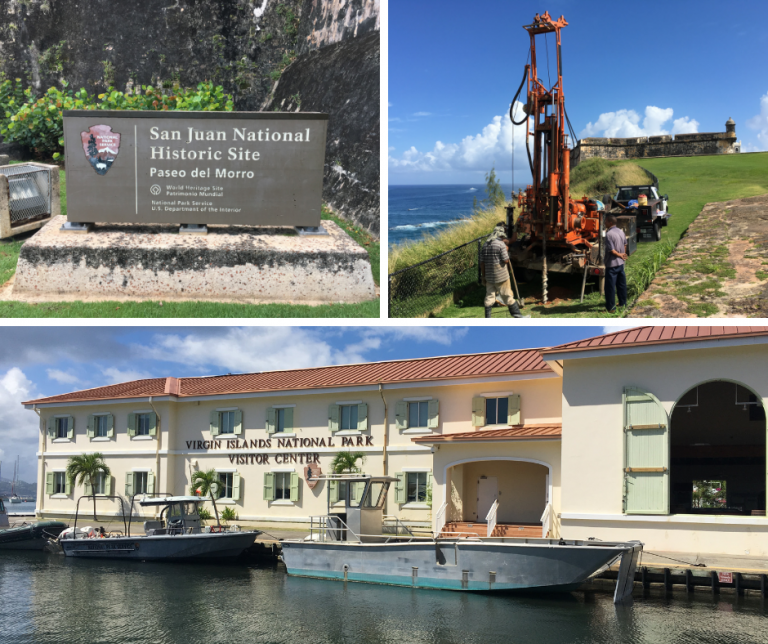Geo-Hydro On-the-Go: National Park Projects
With five offices across Georgia and North Carolina, Geo-Hydro has worked on hundreds of projects throughout the Southeast. However, our team’s skills and commitment to our clients know no bounds. We serve all our projects, near or far, with exceptional attentiveness and care. When duty calls, Geo-Hydro’s team members go where they are needed.
In the following post, Marty Peninger, one of Geo-Hydro’s senior geotechnical engineers, reflects on his experience working on National Park projects outside the Lower 48.
In the last few years, I have had the opportunity to work on projects outside the Lower 48 for the United States National Park Service through our client, Lord, Aeck & Sargent.
In 2016, I traveled to San Juan National Historic Site in Puerto Rico to provide geotechnical services to help stabilize a sandstone cliff. In recent years, several large sections of the cliff had dislodged and fallen either near or on a heavily used multi-use trail, Paseo del Morro, between the bottom of the cliff and San Juan Bay.
In 2018, I went to Virgin Islands National Park on St. John to provide geotechnical services to help stabilize a retaining wall failing across four residences located within the park. The U.S. National Park Service owns those residences house park staff occupy.
Each of these projects presented separate challenges unique to working outside of the contiguous United States.
In Puerto Rico, we had to find a local drilling subcontractor and oversee an exploration including three test borings. When working with the same subcontractor during a previous project at the park, we quickly realized we had different concepts of when a work day starts, when it ends, and how long a lunch break should take.
Because of these differences, I adjusted the project timeline for my 2016 work in San Juan. For the 2016 project, we gave ourselves 5 days to complete the exploration and completed it in 3½ days. Understanding the contrast between the working style I adhere to in Georgia and the working style of the drilling subcontractors we use in Puerto Rico made all the difference. The project ran much smoother with much less tension and teeth gnashing than our 2014 project.
Although the Virgin Islands project did not require coordinating with a subcontractor, it did require about 150 pounds of equipment. We were authorized on the project with a short fuse to get the field work completed and didn’t have time to ship the equipment. Getting the equipment on the plane, into a cab, to the ferry terminal, on a boat, into another cab, and then to the hotel room made the actual field work seem almost relaxing. The Islands may have had something to do with that, though.

